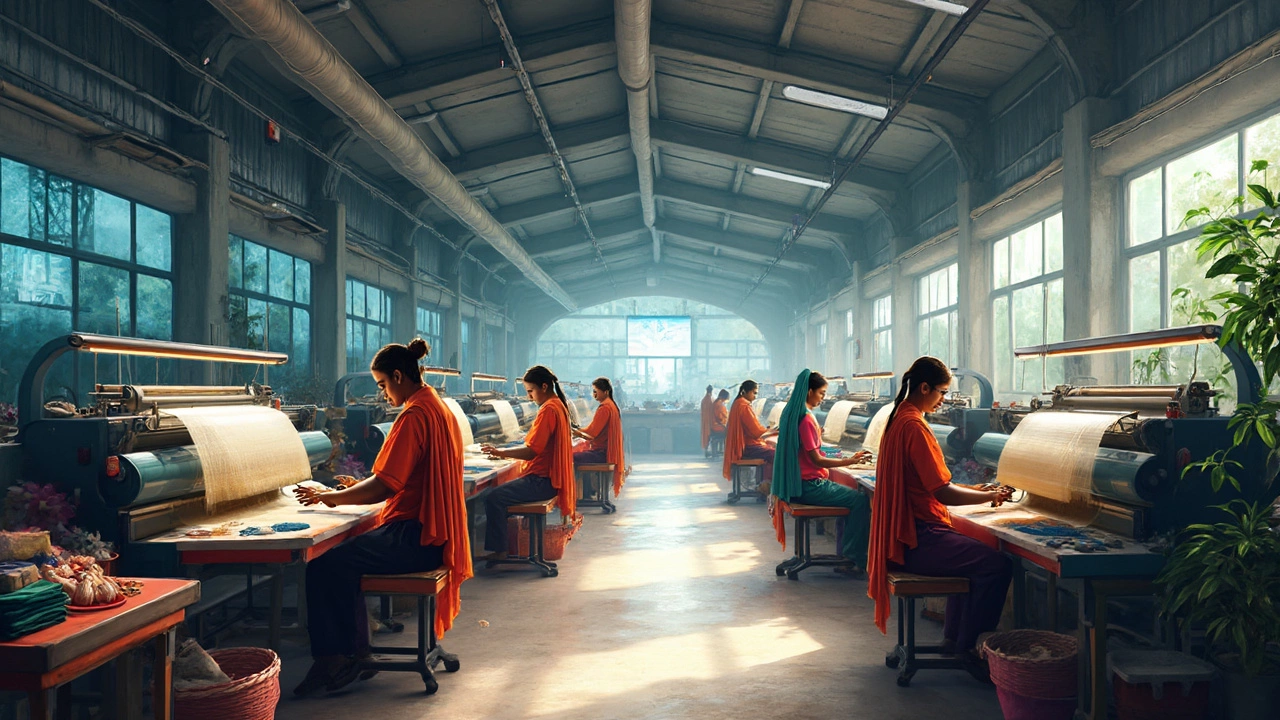Sustainable Textiles: What They Are and Why You Should Care
When you hear "sustainable textiles," think of fabrics that are kind to the planet and to the people making them. It’s not just a buzzword – it’s a real shift in how we grow, process, and use material for clothes, upholstery, and more. From organic cotton fields to recycled polyester factories, the whole chain is getting greener.
So why does this matter? Simple: the textile industry drinks up a lot of water, throws out chemicals, and adds waste to landfills. Switching to sustainable options cuts down those impacts and often means better quality, longer‑lasting products. Plus, many shoppers are willing to pay a bit more for items that don’t harm the environment.
Key Types of Eco‑Friendly Fabrics
Below are the most common sustainable fabrics you’ll run into:
- Organic Cotton: Grown without synthetic pesticides or fertilizers. It uses less water than conventional cotton and leaves the soil healthier.
- Recycled Polyester: Made from post‑consumer plastic bottles or old polyester garments. It saves energy and reduces landfill waste.
- Tencel (Lyocell): Produced from sustainably harvested wood pulp using a closed‑loop process that recycles almost all solvents.
- Hemp: Naturally resistant to pests, requires little water, and gets stronger as it ages.
- Modal: Similar to Tencel, it comes from beech trees and offers a soft feel with low environmental impact.
Each of these fabrics brings something unique to the table, whether it’s softness, durability, or low water usage. Choosing any of them helps push the market toward greener standards.
How to Spot Truly Sustainable Textiles
Not every label that says "eco" is legit. Here’s a quick checklist you can use while shopping:
- Look for certifications like GOTS (Global Organic Textile Standard), OEKO‑Tex, or Bluesign. They verify the material meets strict environmental criteria.
- Check the fiber content. A blend that says "80% recycled polyester, 20% organic cotton" is usually more transparent than a vague "eco‑blend."
- Read the brand’s sustainability report. Companies that publish data on water usage, carbon emissions, and waste management are usually serious about their claims.
- Consider the end‑of‑life. Fabrics that can be recycled or composted have a smaller footprint once you’re done with them.
These steps help you avoid green‑washing and support brands that really care about the planet.
Beyond buying, you can extend the life of sustainable textiles by washing them in cold water, avoiding harsh detergents, and repairing small tears instead of tossing them out. The longer a garment lasts, the less new material is needed.
India is becoming a major player in this space. Regions like Gujarat and Tamil Nadu are seeing new factories that focus on organic cotton processing and recycled polyester production. Government incentives and growing consumer demand are driving this green wave, making it easier to find locally sourced sustainable fabrics.
In short, sustainable textiles aren’t a niche trend – they’re the new normal. By choosing eco‑friendly fabrics, you cut down water use, lower chemical pollution, and support a market that values responsible manufacturing. Next time you shop, ask yourself: "Is this fabric certified? Does it come from recycled or organic sources?" Small questions lead to big changes for the planet.
Ready to make greener choices? Start with one piece of sustainable clothing, feel the difference, and watch how easy it is to build a more eco‑friendly wardrobe.

Textile Industry Outlook 2024: What's Really Shaping Indian Textile Manufacturers?
India's textile industry in 2024 is running at a different pace with global trends shaking things up. Domestic demand is ticking up, and export numbers are shifting, but labor, costs, and new technology are changing the game for manufacturers. Sustainability isn't just a buzzword—buyers are demanding proof. This article lays out the raw facts, industry shifts, and tips for textile manufacturers in India looking to stay ahead. Get a fresh look at what's actually driving the future of Indian textiles.
